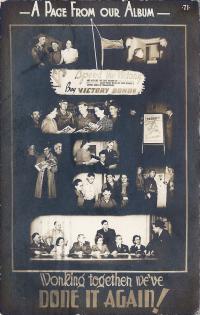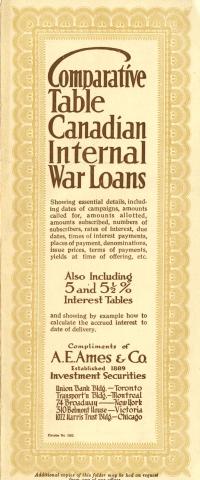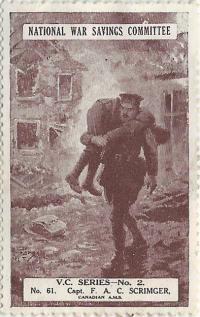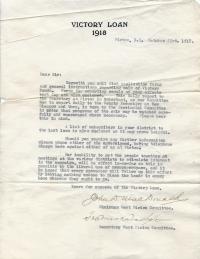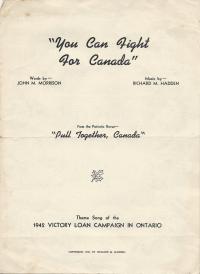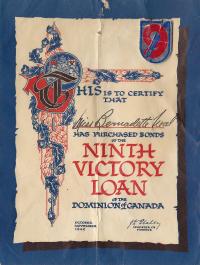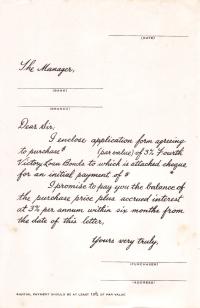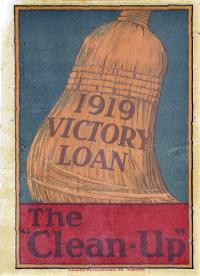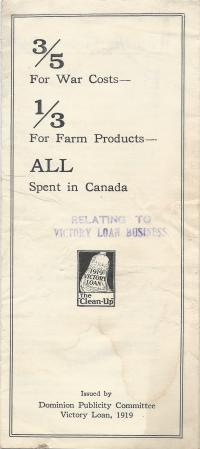Victory Loans and War Savings
Speed the victory!
This postcard was sent to a soldier, likely by his former co-workers in Wallaceburg, Ontario, to celebrate their success in the 1943 Victory Bond campaign.
The 1917 Victory Loan campaign
This booklet stressed that money generated in the 1917 Victory Loan campaign would only be spent for war purposes, and would only be spent in Canada.
Saving for the war
Carrying interest rates of between 5% and 5.5%, Canada's Victory Loans represented a sound investment, and an excellent opportunity to show patriotism by supporting the war effort.
Dr Scrimger, VC
This war savings stamp honoured Captain Francis Scrimger of Montreal, who won the Victoria Cross at the Second Battle of Ypres in April 1915.
Victory Bonds on sale!
Like previous campaign, the 1918 Victory Loan drive relied on thousands of local volunteers, both as organizers and canvassers.
"Pull Together, Canada"
Canada's second Victory Loan campaign ran in 1941 and to generate public interest, the Ontario Public Relations Committee mounted a splashy stage show, complete with its own theme song.
A Victory Loan donor
The Second World War ended in August 1945, but the 9th Victory Loan continued to attract support from Canadians in October and November.
For your bank manager
To simplify the process of subscribing to the 4th Victory Loan, the federal government provided this template letter, which could be filled out and submitted to any bank.
One last Victory Loan
The First World War was over, but this 1919 window decal offered a reminder that there were still bills to be paid - and a Victory Loan to support.
Peace - and another Victory Loan
Although an armistice ended the First World War in November 1918, war spending continued - for the demobilization of soldiers, for food to send to the devastated areas of Europe, and for veterans' programs. In 1919, Canadians were again asked to support the Victory Loan.

